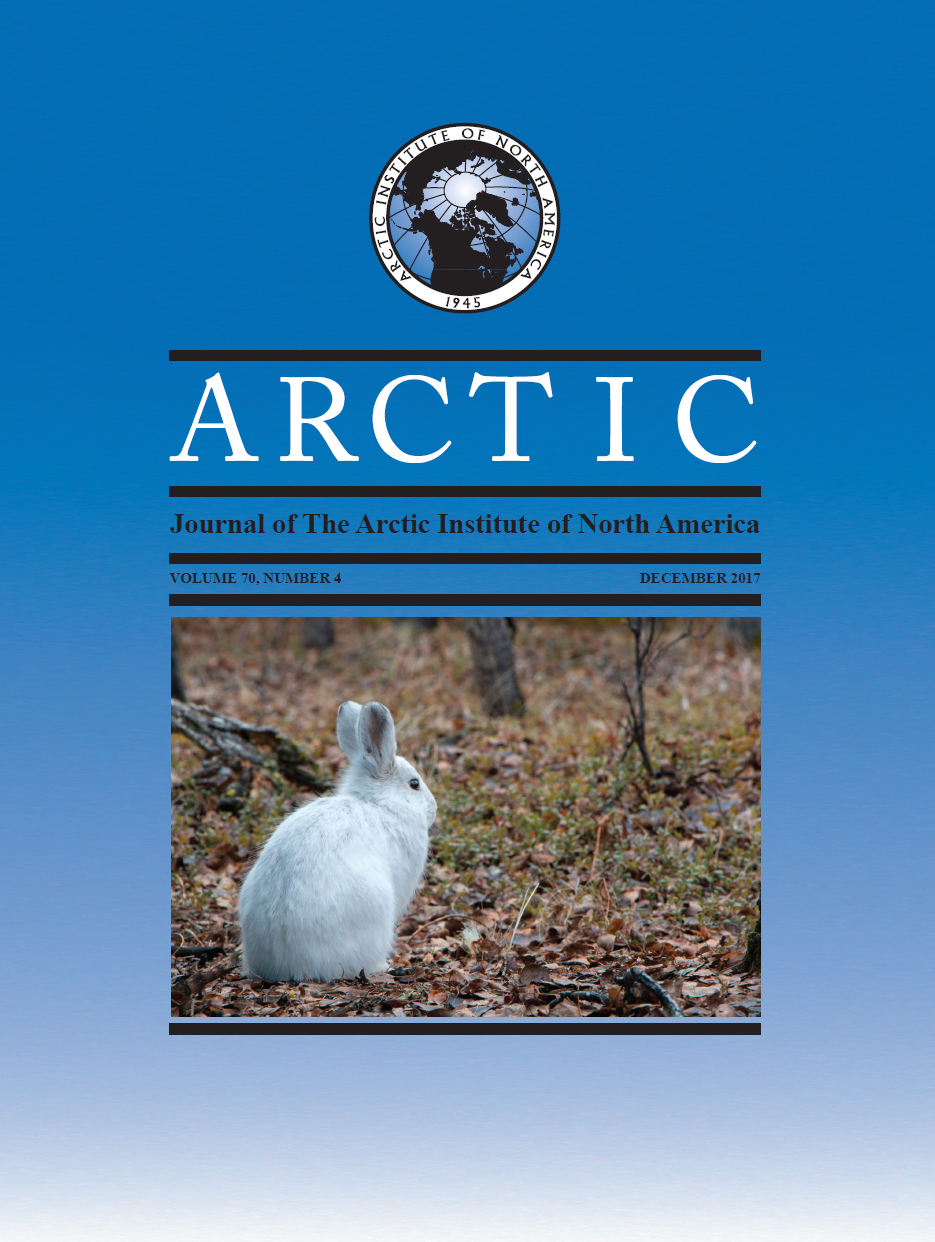Mid to Late Holocene Population Trends, Culture Change and Marine Resource Intensification in Western Alaska
DOI:
https://doi.org/10.14430/arctic4681Keywords:
Alaska prehistory, radiocarbon dating, archaeological demography, population ecology, culture change, maritime adaptations, human migration, Arctic Small Tool tradition, Norton traditionAbstract
The goal of this project is to understand the influence of population size on human adaptation processes and culture change during the Mid to Late Holocene in Western Alaska. We use a database of 1180 radiocarbon dates ranging from 6000 to 1000 14C years BP and drawn from 805 archaeological components in Alaska to construct a proxy record for relative change in regional and Alaskan metapopulation sizes over time. Our analysis indicates that a major population crash coincided with the disappearance of the Arctic Small Tool tradition (ASTt) and the subsequent emergence of the Norton tradition. The ASTt population began to decline around 3600 cal BP, and by 3500 cal BP it had disappeared almost completely from northern tundra habitats, though it persisted in coastal areas in Northwest and Southwest Alaska for another 500 years. The reduction in human population across Alaska after 3600 cal BP appears linked to a reduced carrying capacity that was perhaps driven by a caribou population crash. Such a shock would have increased population pressure and fostered increased reliance on marine resources, precipitating cultural changes associated with an increasingly complex maritime economy. The sharp decline in ASTt population size reduced the number of cultural role models for this population, resulting in the loss of some of the tradition’s characteristic cultural traits, while the influence of neighboring populations in southern Alaska and across the Bering Strait apparently increased, counteracting this attrition of cultural traits. Holistic explanations of the ASTt-Norton transition must take into account population size, ecological adaptation, and cultural transmission processes, as is true for cultural change more generally.


